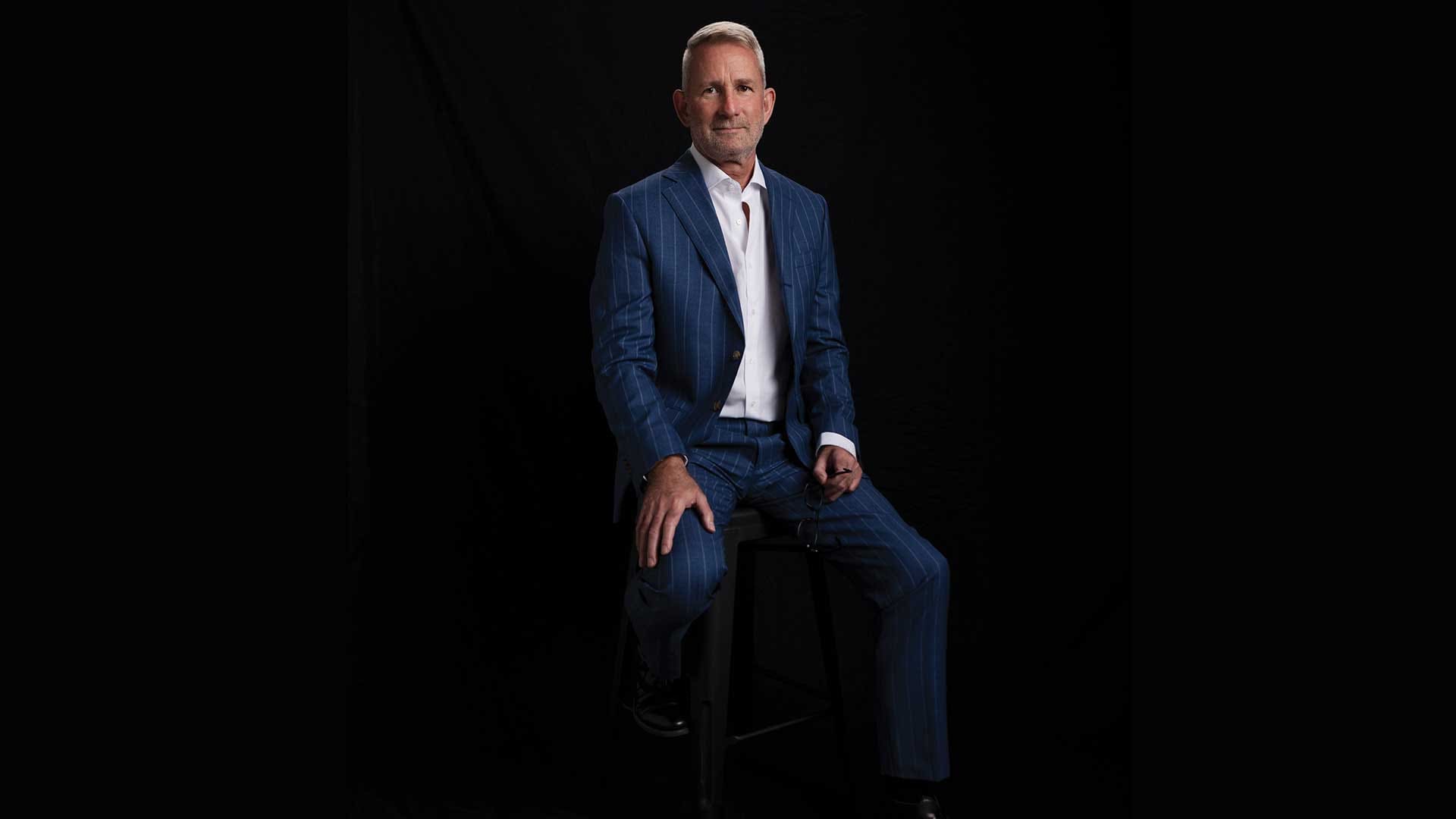Quantum Leap
As Chair and Director at Virtual Blue, Dr. Peter Catt is not just talking about the future, he’s building it. With a doctorate in applied computing, a private pilot’s licence, and a curiosity that spans everything from machine learning to cosmology, he blends deep domain technical knowledge with big-picture vision. We talk to Peter about how Virtual Blue is helping New Zealand businesses harness the power of AI and automation to solve complex problems, boost productivity, and free teams from the mundane.
How do you describe the mission of Virtual Blue?
At Virtual Blue, we’re all about helping organisations do more with smart technology. We love seeing New Zealand businesses harness AI and Robotic Process Automation to tackle tricky problems, work smarter, and open new doors for growth. Rather than just throwing tech at things because it’s shiny and new, we’re focused on delivering real outcomes that genuinely matter to our clients’ goals.
In some of Virtual Blue’s comms about the automation services you offer clients, you mention “Free your team from the mundane.” The usual discussion around AI from a workplace efficiency perspective is often more black and white. Can you talk a little about what you have seen and what it means to workplace culture and productivity when clients can have their staff drop the manual stuff and focus on the things they can do that AI can’t?
You know, when we talk about freeing teams from the mundane, we’re touching on something that often gets lost in the AI conversation. What I’ve seen is nowhere near as black and white as the “AI will steal your job” headlines suggest. What this means for workplace culture is that people feel properly valued when they can use their uniquely human skills, creativity, empathy, complex problem-solving, rather than spending Friday afternoon wrestling with spreadsheets. The result? A more engaged team and, interestingly, the companies that do this tend to see productivity jump by about 25-30% in our experience.
You are the Chair and Director of Quantum and AI for Virtual Blue. How do the two roles bleed into each other? What does it mean to bring a technical perspective to the board and a governance perspective to your day-to-day work?
As Chair, I’m focused on the broader vision, guiding our strategy, ensuring we’re acting ethically, and plotting a course for the future that benefits everyone involved. Meanwhile, as Director, I’m deeply engaged in the technical details, collaborating with our team on projects like workflow automation or predictive modelling. On the technical side, I bring practical insights to board discussions, cutting through hype to focus on what’s feasible and impactful. On the other side, the governance perspective I carry into my daily work ensures we’re not just chasing innovation for its own sake, it keeps me asking whether our efforts are maximising value for our customers and aligned with our values.
You’re at the forefront of two of the zeitgeist technologies of the moment in quantum and AI. What excites you most about where these are heading?
The future of AI and quantum computing is incredibly exciting, and being part of it feels like standing on the edge of something huge. AI’s already doing remarkable things, digging into data, spotting patterns, and predicting trends, as we’ve seen with our Causality solution, but quantum computing could push those capabilities even further. I’m particularly thrilled by the idea of these two joining forces; imagine quantum-powered machine learning solving problems we can barely tackle now, like designing precision medicines and advanced materials, or building accurate climate models. I’m also really excited about how AI tools are becoming more accessible. We’re watching small teams use foundation models to build amazing applications that would have cost millions just a few years back.

It seems like there is an LLM arms race going on with China even throwing a spanner into Silicon Valley AI dominance. How do you stay ahead in a space that is moving at such pace?
Given the incredible rate of change I spend at least half of my time diving into research papers, industry updates, and fresh ideas, while my role as a global panellist with MIT Tech Review offers a further insight to what’s happening worldwide. Our partnership with Microsoft for LLMs keeps our tech edge honed too. But it’s not about racing blindly, we prioritise what makes sense for our clients, testing new approaches quickly, yet thoughtfully. Real-world value is always on my mind; it’s about finding that sweet spot where we move fast, stay innovative, and deliver solutions that genuinely help people, not just chase trends.
How would you explain the power of quantum computing to the average person?
Think of it like this: traditional computing is like searching for a book by checking each shelf one at a time. With millions of books, you’d be there for years. Quantum computing lets you check all shelves simultaneously. It uses some mind-bending properties of quantum physics, superposition and entanglement, to process information in ways that normal computers simply can’t manage. For businesses, this means problems that were previously in the “too hard” basket, like optimising massive supply chains or the rapid discovery of life-saving drugs, suddenly become doable. Although it’s not about doing the same old things faster; it’s about tackling problems we just couldn’t solve before.
What do you think most businesses get wrong when they first try to integrate AI?
The biggest mistake I see is starting with the tech rather than the problem. Too many businesses want “an AI strategy” without first figuring out what specific challenges they’re trying to solve. Another classic error is underestimating just how important good data is. AI systems are only as useful as the data they learn from, yet many organisations rush ahead without sorting out their data foundations. Finally, the human side often gets overlooked. Even the cleverest AI solution will flop if your team doesn’t understand it or trust it. Successful integration needs solid training, clear communication about changing workflows, and ways for people to give feedback so systems can get better over time.
Your work with predictive modelling & optimisation with your Causality offering seems like a game-changer. Can you talk a little bit about how it works and what it has meant for some of the clients you have implemented it with?
Our Causality offering really cuts through all the data noise to get at the “why” behind what’s happening in your business or marketplace. It’s a powerful platform that delivers serious predictive modelling, helping our clients predict, plan and act with genuine confidence. My doctoral research into optimising forecasting models has given me a solid foundation for this work.
We’ve built it on Microsoft Azure, where we blend machine learning with advanced statistical techniques to forecast future states incredibly accurately, whether that’s complex social or econometric modelling or just figuring out product demand on a massive scale. The whole process pulls data together through Microsoft Fabric, applies predictive modelling using Azure machine learning and our own proprietary models, and serves up insights via Power BI dashboards. And here’s where it gets really interesting, for those really tricky problems like complex medical staff scheduling, production planning or delivery logistics, we can apply quantum annealing to find robust solutions in seconds.
A national parts distributor we worked with saw this in action when our models helped them balance supply and demand with remarkable precision. They managed to release $3.2 million in inventory that had been tied up as safety stock. More recently, we performed some complex econometric modelling to predict supply chain disruptions resulting from US trade policy changes, and unfortunately for the world, those predictions are starting to pan out exactly as our machine learning model suggested (noting the modelling took place before the April tariff announcements).
Smart Engage is a fascinating example of the importance of empathy in tech for healthcare but there also seems to be a lot of complexity going on behind the scenes to create an easy flow for patients. Can you talk about the process of bringing this to “life”?
Smart Engage started with a simple goal: make healthcare less stressful and more human for patients. We listened to people about what frustrates them, think clunky multi-page booking systems or vague next steps, and built a platform that’s clear, supportive, and easy to use.
Behind the friendly Avatar front-end, there’s some serious work happening, AI models that get what you’re asking, real-time scheduling that syncs with clinical systems, and secure data links that keep it all safe and seamless. With around 90 radiology clinics across Australia and New Zealand now on board, along with our recent launch with Sexual Wellbeing Aotearoa, it’s making patient journeys easier and brighter for more people.
How do your studies in philosophy of science and cosmology influence your approach to tech innovation?
Philosophy of science has definitely shaped how I approach tech. It’s taught me to question what we assume, recognise the limits of our understanding, and see scientific knowledge as something that’s often evolving. That mindset keeps me grounded. When I’m building AI systems, I’m constantly aware that our models are just snapshots of a reality that’s far more complex, pushing us to create tools that are sturdier, more adaptable, and ready for the messiness of the real world.
Cosmology demonstrates the power of mathematics to describe and model nature’s beautiful complexity. It highlights mathematics as a powerful language for uncovering structure in what might otherwise appear chaotic – stars forming, black holes warping spacetime. This perspective certainly helps identify underlying structures in seemingly difficult problems. Both fields taught me to really question assumptions before jumping to solutions.
As if your CV wasn’t already enough to humble most people, you have a private pilot’s licence. Does flying shape the way you think about systems or decision-making?
Flying has been an incredible teacher for both systems thinking and decision-making. As a pilot, particularly in twin-engine aircraft, you’re managing a complex system with multiple interdependent variables, weather, aircraft systems and performance, navigation, communications, all while making decisions with real consequences.
It’s taught me the value of solid processes and procedures for high-stakes situations. In both flying and technology leadership, having systematic approaches to problem-solving creates reliability and safety. You need to assess the situation, accept the evidence (good or bad), consider your options, and execute decisively. That same approach serves me well when navigating complex business challenges.


